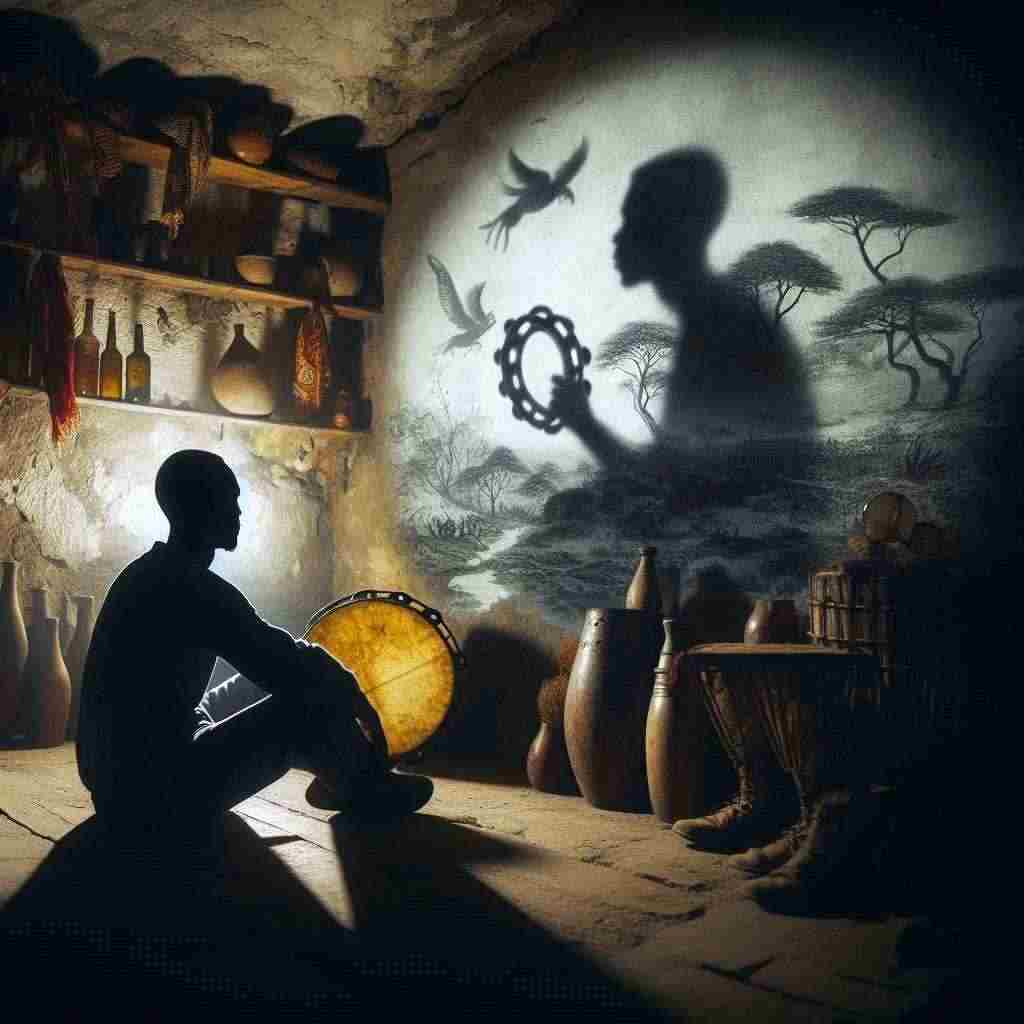Black Tambourine
Hart Crane
1899 to 1932

Want to track your favorites? Reopen or create a unique username. No personal details are required!
The interests of a black man in a cellar
Mark tardy judgment on the world's closed door.
Gnats toss in the shadow of a bottle,
And a roach spans a crevice in the floor.
Aesop, driven to pondering, found
Heaven with the tortoise and the hare;
Fox brush and sow ear top his grave
And mingling incantations on the air.
The black man, forlorn in the cellar,
Wanders in some mid-kingdom, dark, that lies,
Between his tambourine, stuck on the wall,
And, in Africa, a carcass quick with flies.
Hart Crane's Black Tambourine
Hart Crane's poem "Black Tambourine" presents a complex tableau of isolation, racial tension, and the struggle for identity in early 20th century America. Through vivid imagery and symbolic references, Crane explores themes of confinement, cultural displacement, and the lingering effects of historical oppression.
The poem opens with a striking image of "a black man in a cellar," immediately establishing a sense of isolation and confinement. This subterranean setting serves as a metaphor for the marginalized position of African Americans in society, trapped beneath the "world's closed door." The cellar becomes a liminal space, separated from both the world above and the ancestral homeland, emphasizing the protagonist's state of cultural and social limbo.
Crane's use of animal imagery throughout the poem adds layers of meaning to this confined environment. The gnats and roach, typically associated with decay and filth, underscore the degrading conditions of the cellar. However, these creatures also possess a certain resilience and adaptability, perhaps mirroring the survival instincts of the marginalized individual.
The reference to Aesop in the second stanza introduces a complex interplay of cultural narratives. Aesop, a Greek slave known for his fables, represents both wisdom and subjugation. The juxtaposition of "Heaven" with the earthbound "tortoise and the hare" suggests a tension between spiritual aspirations and earthly realities. The "Fox brush and sow ear" adorning Aesop's grave further emphasize this duality, blending symbols of cunning and humility.
Crane's inclusion of "mingling incantations on the air" evokes a sense of magical realism, hinting at the power of storytelling and oral tradition in preserving cultural identity. This reference to incantations also foreshadows the tambourine mentioned later in the poem, linking the ancient Greek storyteller to African musical traditions.
The final stanza returns to the "black man, forlorn in the cellar," but now places him in a broader context. Crane describes him wandering in a "mid-kingdom, dark," a powerful metaphor for the cultural limbo experienced by many African Americans. This in-between state is physically represented by the space between the tambourine on the wall and the distant African continent.
The tambourine itself is a potent symbol, representing both musical tradition and enforced performativity. Stuck on the wall, it becomes an artifact of a culture partially lost or suspended. The contrast between this silent instrument and the "carcass quick with flies" in Africa creates a haunting image of decay and disconnection from ancestral roots.
Crane's use of the word "quick" to describe the carcass is particularly nuanced. While it primarily evokes the image of flies swarming over dead flesh, it also carries connotations of life and movement, suggesting a complex relationship between death and vitality, past and present.
The poem's structure, consisting of three quatrains with an ABAB rhyme scheme, provides a sense of formal control that contrasts with the chaotic and confined world it describes. This tension between form and content mirrors the struggle of the protagonist to find order and meaning within his constrained existence.
Through its rich imagery and layered symbolism, "Black Tambourine" offers a poignant exploration of the African American experience in the early 20th century. Crane captures the sense of displacement and cultural fragmentation, while also hinting at the resilience and enduring cultural connections that persist despite historical trauma and ongoing marginalization. The poem invites readers to consider the complex interplay between personal identity, cultural heritage, and societal structures, making it a valuable text for critical analysis in the context of American literature and cultural studies.
This text was generated by AI and is for reference only. Learn more

